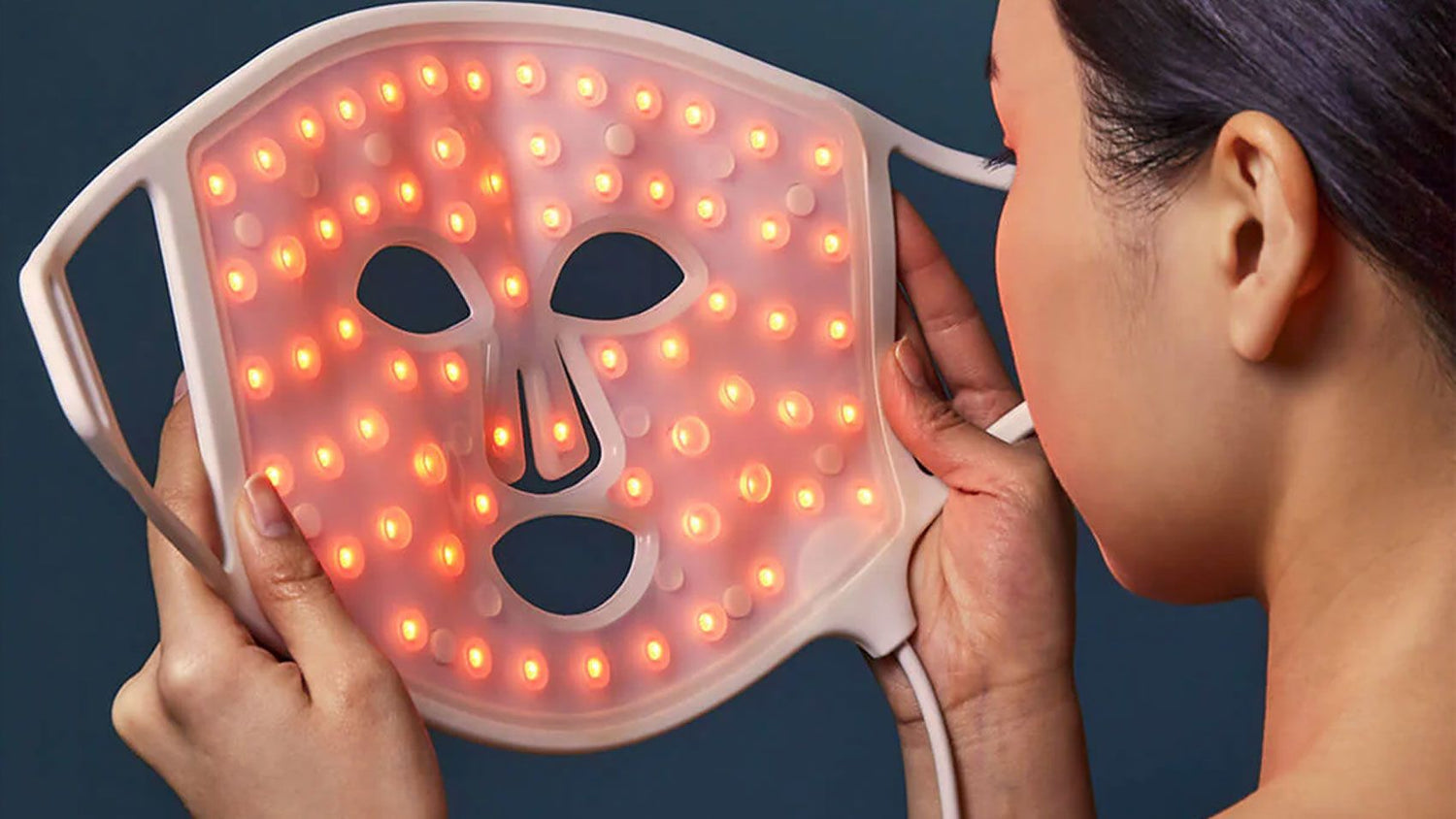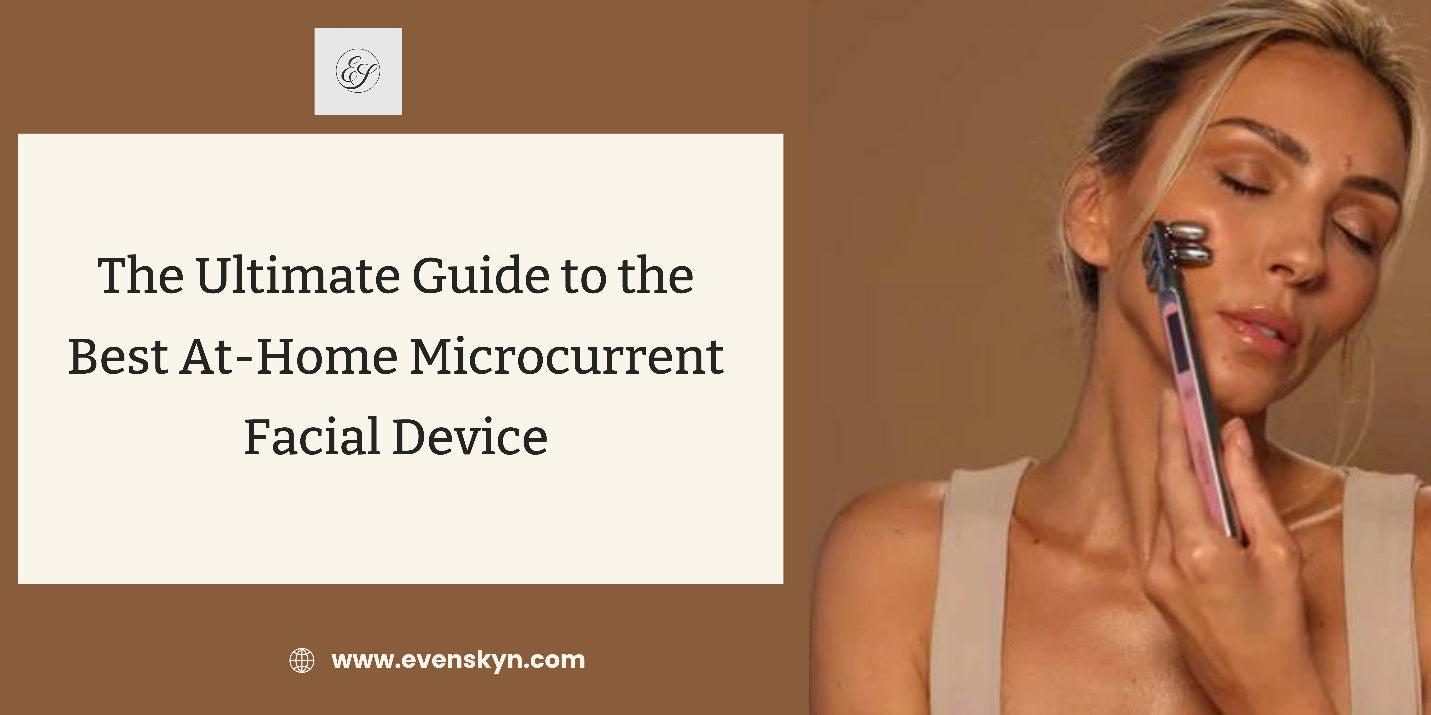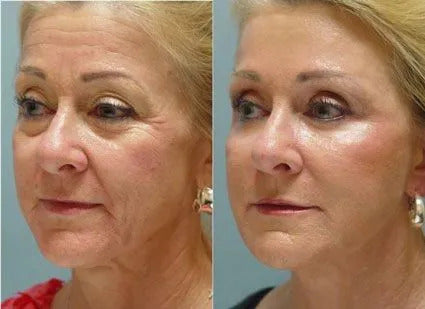Medically Reviewed by Dr. Lisa Hartford, MD
Individuals have been trying to find various methods to combat the signs of aging. With extensive research, our scientists have successfully explored one innovative method, i.e., red light therapy (RLT). It is a non-invasive skin tightening treatment that harnesses the power of particular wavelengths of light.
These wavelengths help in stimulating cellular processes and promote skin tightening. You must be wondering why the process sounds a bit complex. However, the science behind RLT can be understood by learning about molecular signaling pathways within the skin.
We all know that collagen is the tissue responsible for building skin. Now, RLT therapy acts directly on the powerhouse of the cell, promoting skin repair, cell growth and enhancing skin rejuvenation.
It is essential to evoke specific cellular responses to get promising results from RLT skin tightening treatment. However, to do that, you must know about the signaling pathways on the molecular level. Read further to know more about it.
What are Molecular signaling pathways?
Molecular signaling pathways are a network of molecules that relay information from the external environment to the inside of the cells. This triggers various cellular responses. It is interesting to note that these pathways involve receptors on cell surfaces. These receptors interact with specific signaling molecules and initiate a cascade of events within the cell.
Our body is composed of trillions of cells. Each one is responsible for providing structure to the body by taking energy from the food you ingest. This energy lets our body perform specialized functions such as cell repair, tissue growth, skin rejuvenation, etc. However, as we grow, our body starts deteriorating; one such visible example is our skin.
One thing to note is that much research has been conducted to know more about the molecular mechanism underlying skiing and aging and methods to fight its effects. Molecular signaling pathways have attracted many due to their application in skin-tightening procedures.

We know that the skin's firmness is largely determined by the balance between extracellular matrix (ECM) components and other cellular processes. These EMC components include Collagen and elastin fibers. To understand more about molecular signaling pathways, keep reading.
Components of molecular signaling pathways
Now that you understand the workings of molecular signaling pathways, here are the components involved in signaling pathways.
ECM
Signaling pathways often interact with ECM components for skin tightening. ECM components include a complex network of proteins, such as collagen and elastin. These components provide structural support. You must note that collagen fibers are important to maintain skin firmness.
Receptors
You can find receptors on the surface of the cells. They facilitate the communication between the ECM and the cell's interior. This communication triggers various cellular processes. A cascade of signals activates and influences cell behavior. They are indirectly leading to skin rejuvenation.
Growth factors
One growth factor is transforming growth factor-beta (TGF-β), which is liable for cell growth, differentiation, and tissue repair by stimulating collagen synthesis, thus contributing to skin rejuvenation. Other two growth factors are Insulin-like growth factor (IGF) and Platelet-derived growth factor (PDGF). These two factors are also responsible for collagen production and promoting skin rejuvenation.
Other components
Molecular signaling pathways include several other components as well, such as the Mitogen-Activated Protein Kinase (MAPK) pathway, PI3K/Akt pathway, Smad pathway, Matrix Metalloproteinases (MMPs), Tissue Inhibitors of Metalloproteinases (TIMPs), etc. All these are the contributing factors that enhance skin rejuvenation by influencing cellular activity.
Is Red Light Therapy beneficial for skin rejuvenation?
Red light therapy is known for enhancing skin appearance, reducing lines and wrinkles, and decreasing the chances of sagging. It is also known as low-light therapy or photobiomodulation. RLT has a wavelength of 620 to 750 nm with a penetrating power of 4–5 mm under the skin. It goes directly to the mitochondria of the cell. This stimulates various signaling pathways and starts a range of cellular responses. These cellular responses lead to skin rejuvenation and tightening.

Benefits of RLT utilization for skin tightening:
- Reduces stretch marks
- Increases wound healing capacity
- Improves skin texture
- Repairing sun-damaged skin
- Decrease in acne development
- Quicker skin healing
Who can use RLT?
People with skin issues such as aging, aggressive acne, uneven facial texture, etc., can benefit from red light therapy. These skin conditions could improve over time, and RLT may give you healthier skin. Since RLT is safe, you may use it with a personal device regularly.
Insights from Red Light Therapy Studies
In a recent study, a controlled trial was conducted to study the efficacy of red light in reducing fine lines, rough skin and wrinkles. Subjects between the ages of twenty-seven and seventy-nine were taken. Each person's capacity to independently operate the device was tested, and the results were analyzed. Several groups were made, and an evaluation was made by imparting low-pressure light.
The study's primary objective was to improve the skin complexion and texture. The volunteers were randomly asked to complete a questionnaire and mark their progress. With 128 volunteers who were able to complete the trials. After assessment, the results revealed visible changes in wrinkles and skin roughness. Collagen intensity improved significantly, and skin complexion changed.
Another clinical study was conducted to study the impacts of low-level light therapy on the skin. Trails were reviewed, and results were concluded that RLT is safe and effective for skin rejuvenation. It is suitable for the treatment of acne and skin complexion.
Along with skin rejuvenation, RLT helps in improving sleeping quality as well. You must be wondering how this is helpful with skin tightening. Well, a proper quality sleeping pattern enhances cell repair and cell growth, in return promoting skin rejuvenation. A study was conducted that proves how RLT improves sleeping quality.
Read about the following study done on cancer patients using red light therapy. It is stated that red light therapy enhances the wound-healing process. Because of red light's ability to activate cell division, it is used after the UV radiation session is over to enhance cell repair.
The skin goes through many changes as we age, and red light therapy trials have been conducted to overcome the effect of the contributing factors. The results concluded that RLT effectively increases collagen synthesis and decreases inflammatory cells.
Application of red light therapy on the skin
After reading the case studies and getting adequate evidence supporting the efficiency of the RLT on the skin, you must be wondering how you can use it on your skin. You must be tempted to get attractive skin instantly; going to a surgeon is expensive. Why not buy a device that can assist you at home with skin rejuvenation treatment?
EvenSkyn® Mirage Pro LED Phototherapy Face Mask is the perfect choice for skin rejuvenation at home. The device is professionally made with 204 LEDs. It has the power to penetrate deep into the skin. The principle behind the working of the Mirage mask is based on photobiomodulation.
The red light from the mask will enhance collagen production by releasing 500 joules of energy per minute. The results will be visible through improved skin conditions such as sun spots, fine lines and scars. We know you must be wondering about its safety. It comes with a certification from the FDA, Health Canada, CE, RoHS, AND BSCI. If you want to achieve the desired results, use it three times a week. Each session must be of twenty-five minutes.
Working of the mask:
- The first step is to plug in the USB connector to use the mask.
- Once the mask is plugged in, put it on a clean face for better results.
- You must use it for 25 minutes for each treatment.
- During the treatment, you may control the mask with the LCD remote.
- Another way to control it is by using the automatic cycle feature.

The mask comes with eye protection and adjustable straps. So, relax and wear the mask. After the treatment, apply your usual skincare and clean the mask to avoid bacteria buildup until the next session.
Conclusion
After reading the article, you know that Red light therapy is effective for skin rejuvenation. The ability of the light to penetrate the cells and reach directly to the mitochondria makes it capable of treating your wrinkles and scars.
We promise you that you can achieve exceptional results with an at-home LED phototherapy face mask. This will save you money and time. Although the device is easy to use, you must always take precautions. Stay consistent and see visible changes within a few weeks for better results. The skin will be firmer and smoother.
References
Feehan RP, Shantz LM. Molecular signaling cascades involved in nonmelanoma skin carcinogenesis. Biochem J. 2016 Oct 1.
Purves D, Augustine GJ, Fitzpatrick D. Strategies of Molecular Signaling. 2001.
Kular JK, Basu S, Sharma RI. The extracellular matrix: Structure, composition, age-related differences, tools for analysis and applications for tissue engineering. J Tissue Eng. 2014 Dec 20.
Caerwyn Ash Michael Dubec. "Effect of wavelength and beam width on penetration in light-tissue interaction using computational methods," November 2017
Wunsch A, Matuschka K. A controlled trial to determine the efficacy of red and near-infrared light treatment in patient satisfaction, reduction of fine lines, wrinkles, skin roughness, and intradermal collagen density increase. Photomed Laser Surg. 2014 Feb.
Glass GE. Photobiomodulation: The Clinical Applications of Low-Level Light Therapy. Aesthet Surg J. 2021 May 18.
Zhao J, Tian Y, Nie J, Xu J, Liu D. Red light and the sleep quality and endurance performance of Chinese female basketball players. J Athl Train. 2012 Nov-Dec.
Myakishev-Rempel M, Stadler I, Brondon P, Axe DR, Friedman M, Nardia FB, Lanzafame R. A preliminary study of the safety of red light phototherapy of tissues harboring cancer. Photomed Laser Surg. 2012 Sep;30.
Rocha Mota L, Motta LJ, Duarte IDS, Horliana ACRT, Silva DFTD, Pavani C. Efficacy of phototherapy to treat facial ageing when using a red versus an amber LED: a protocol for a randomised controlled trial. BMJ Open. 2018 May 31.









Leave a comment
All comments are moderated before being published.
This site is protected by hCaptcha and the hCaptcha Privacy Policy and Terms of Service apply.